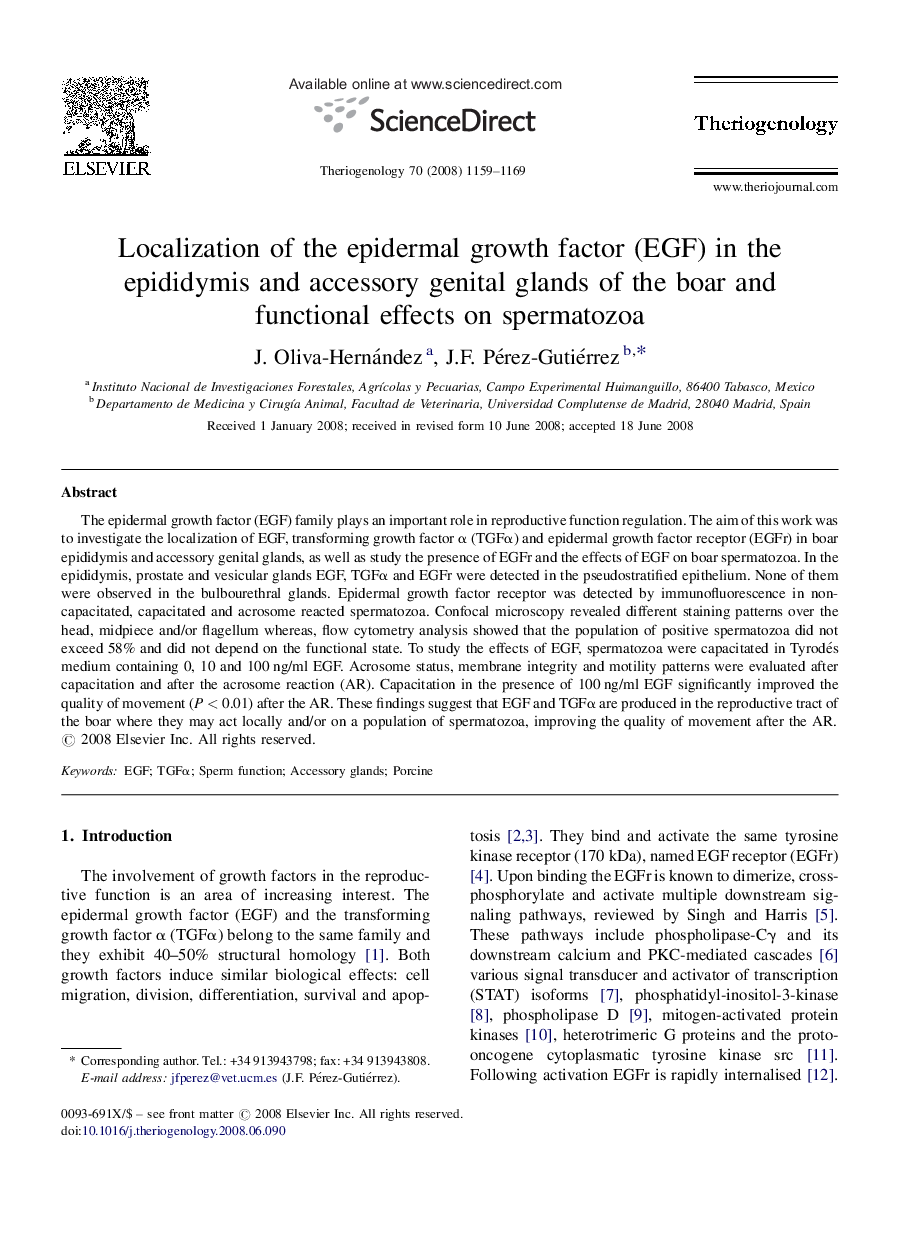| Article ID | Journal | Published Year | Pages | File Type |
|---|---|---|---|---|
| 2096165 | Theriogenology | 2008 | 11 Pages |
Abstract
The epidermal growth factor (EGF) family plays an important role in reproductive function regulation. The aim of this work was to investigate the localization of EGF, transforming growth factor α (TGFα) and epidermal growth factor receptor (EGFr) in boar epididymis and accessory genital glands, as well as study the presence of EGFr and the effects of EGF on boar spermatozoa. In the epididymis, prostate and vesicular glands EGF, TGFα and EGFr were detected in the pseudostratified epithelium. None of them were observed in the bulbourethral glands. Epidermal growth factor receptor was detected by immunofluorescence in non-capacitated, capacitated and acrosome reacted spermatozoa. Confocal microscopy revealed different staining patterns over the head, midpiece and/or flagellum whereas, flow cytometry analysis showed that the population of positive spermatozoa did not exceed 58% and did not depend on the functional state. To study the effects of EGF, spermatozoa were capacitated in Tyrodés medium containing 0, 10 and 100 ng/ml EGF. Acrosome status, membrane integrity and motility patterns were evaluated after capacitation and after the acrosome reaction (AR). Capacitation in the presence of 100 ng/ml EGF significantly improved the quality of movement (P < 0.01) after the AR. These findings suggest that EGF and TGFα are produced in the reproductive tract of the boar where they may act locally and/or on a population of spermatozoa, improving the quality of movement after the AR.
Related Topics
Life Sciences
Agricultural and Biological Sciences
Animal Science and Zoology
Authors
J. Oliva-Hernández, J.F. Pérez-Gutiérrez,
